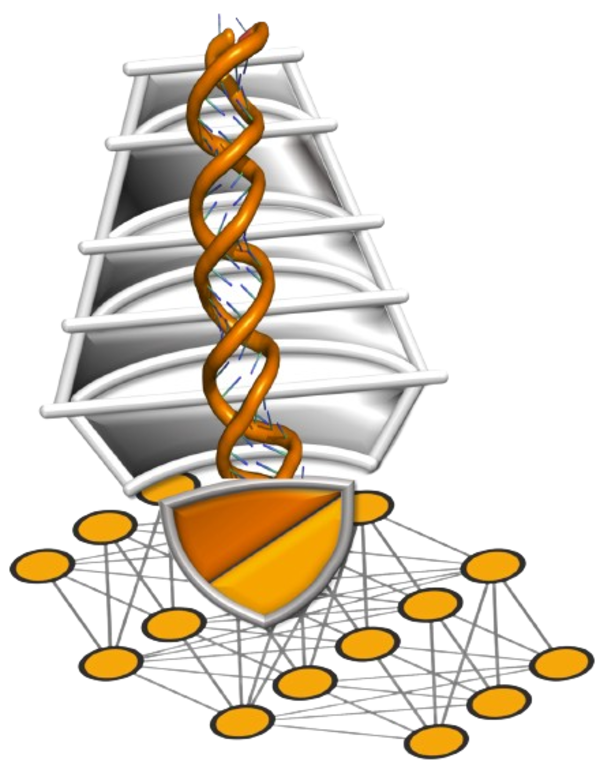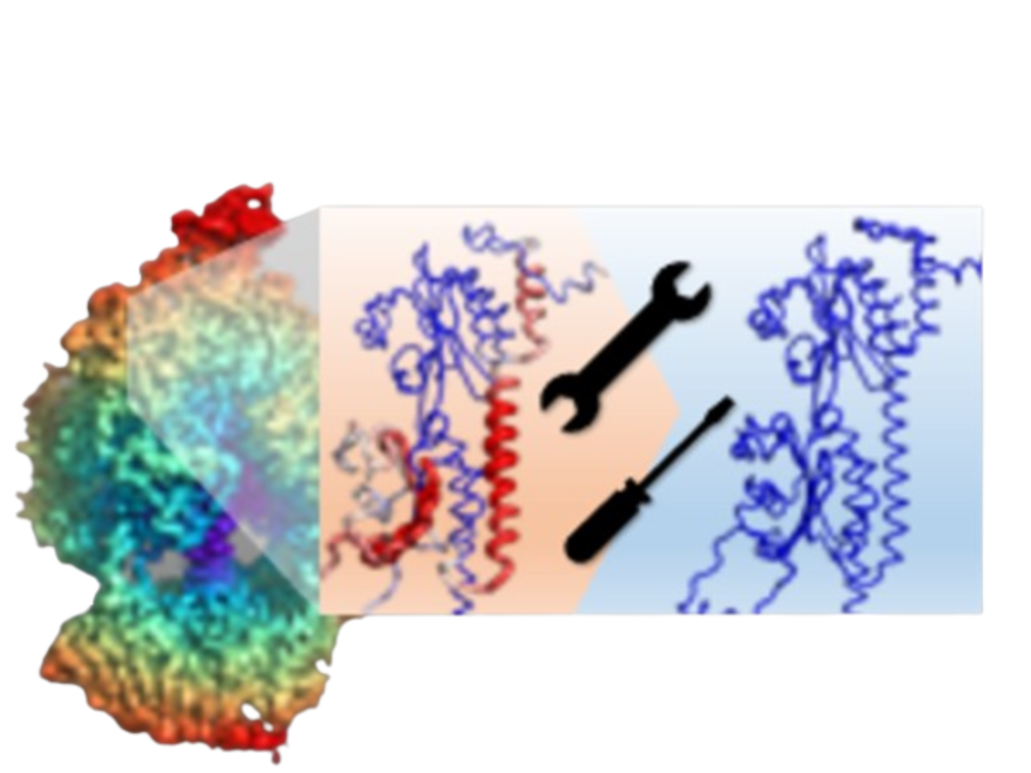CryoREAD is a computational tool using deep learning to automatically build full DNA/RNA atomic
structure from cryo-EM map at resolution 0-5A.
It outputs a file in .pdb format that records the modeled DNA/RNA structure from the input cryo-EM
map.
For cryo-EM map includes proteins, it only modeled the DNA/RNA structures in the complex.
If you want to model the full complex, please try
ComplexModeler(https://em.kiharalab.org/algorithm/ComplexModeler).
Our results webpage comprises three tabs: Results Visualization, Output Logs, and Job Configuration.
Results Visualization:
The "Result Visualization" panel contains the DNA/RNA structure modeled by CryoREAD.
In the right panel, you can also click "Download Outputs" button to download the modeled structure.
The downloaded structure is in .pdb format, you can use PyMol/Coot/Chimera to visualize it or refine
it based on your expertise.
Additionally, you can visualize the map online by clicking the "Show map" button.
Once loaded, the default contour level matches your input; however, you can make adjustments by
clicking the "..." button beside "isosurface."
Within the "Type: Isosurface" option, you can modify the iso-surface value and opacity by scrolling
through the bar for precise adjustments.
This feature allows you to assess the alignment between the modeled structure and the map.
Output Logs:
The 'Output Logs' panel compiles all outputs generated by the scripts.
If you're interested in monitoring the job's progress during execution, this section provides a
comprehensive overview.
Job Configuration:
In the 'Job Configuration' panel, you'll find the input parameters used for this specific job.
These records serve to maintain a log of your submitted input for reference.
Problem Debugging:
For any troubleshooting needs: Should you encounter any issues, please don't hesitate to contact us
via
email to report the problems.
When sending an email, kindly use the subject line format 'CryoREAD problem: [jobid]', where [jobid]
corresponds to the job displayed in the title.
This specific identification helps us efficiently locate and debug jobs in the backend, ensuring a
prompt response to your concerns.
Contact:
dkihara@purdue.edu, xiaowang20140001@gmail.com.
CryoREAD





